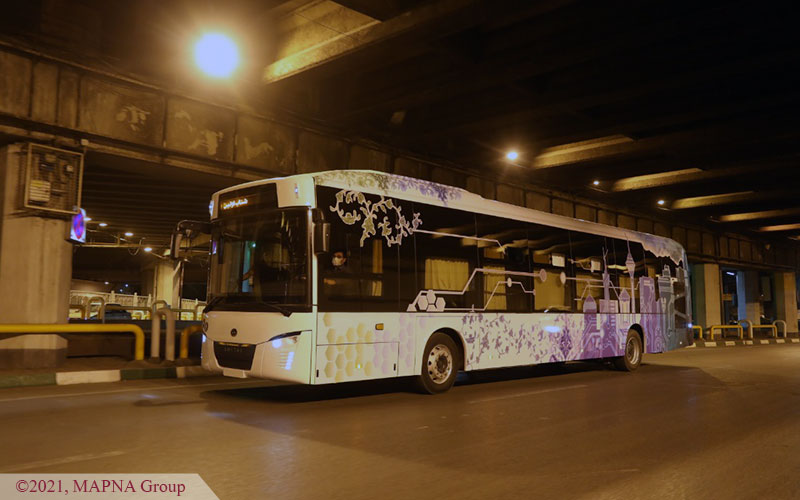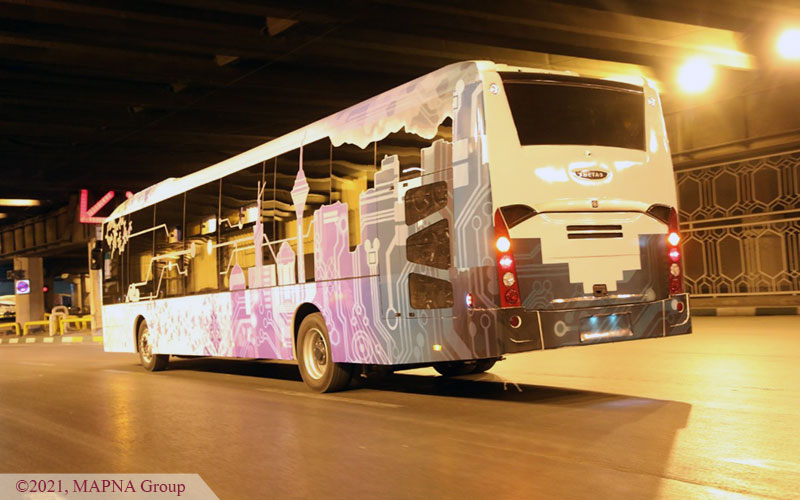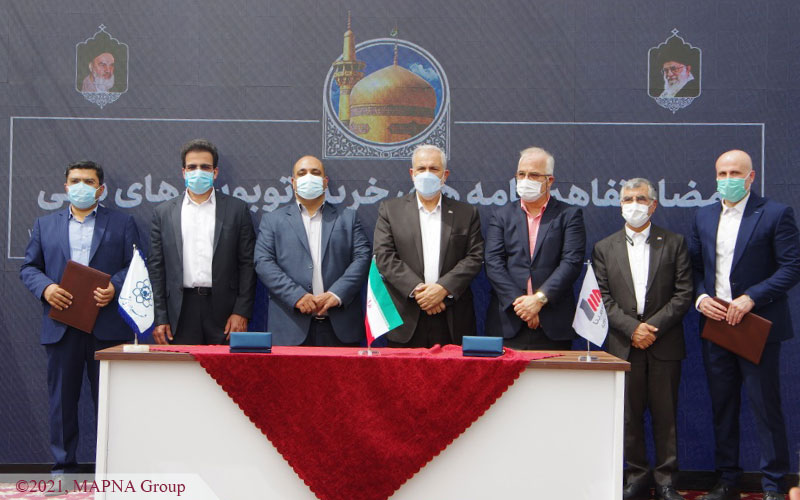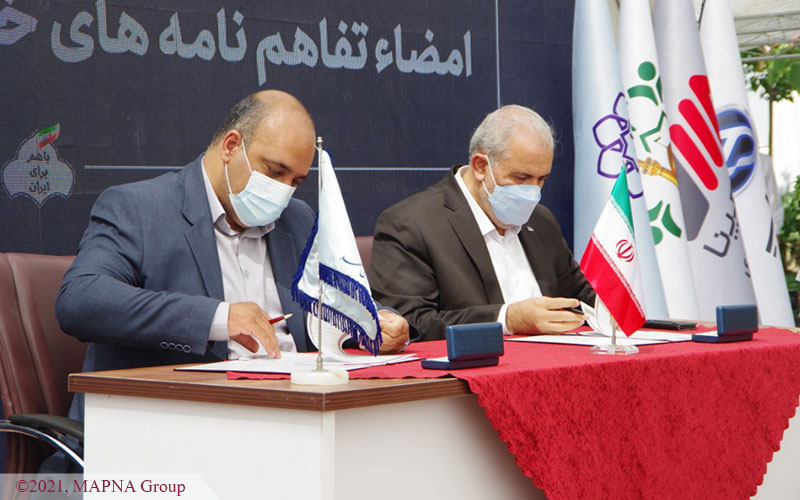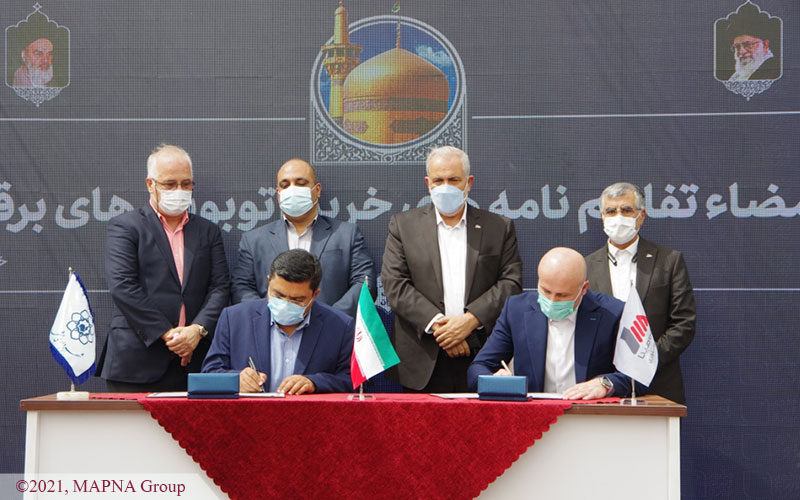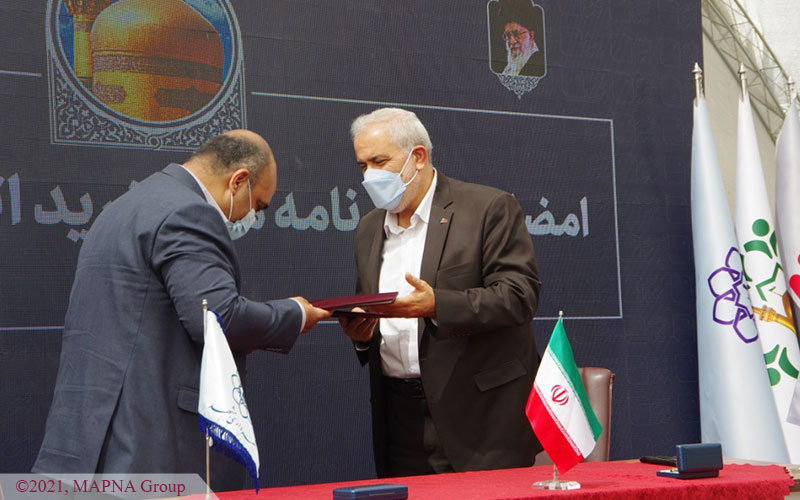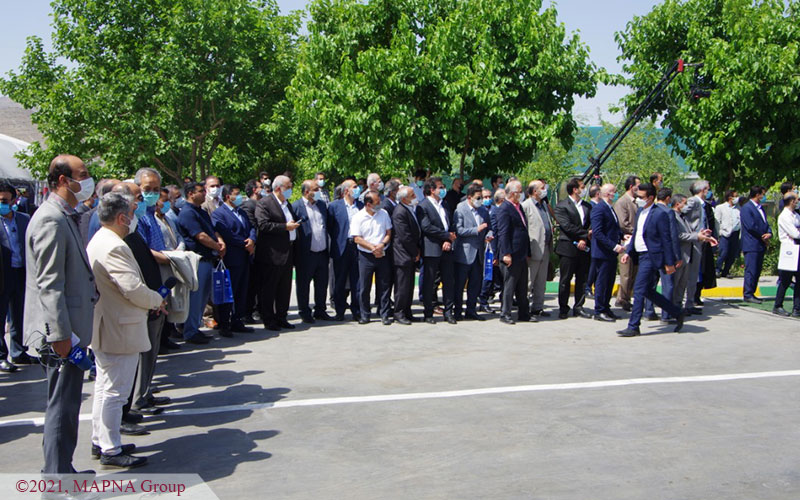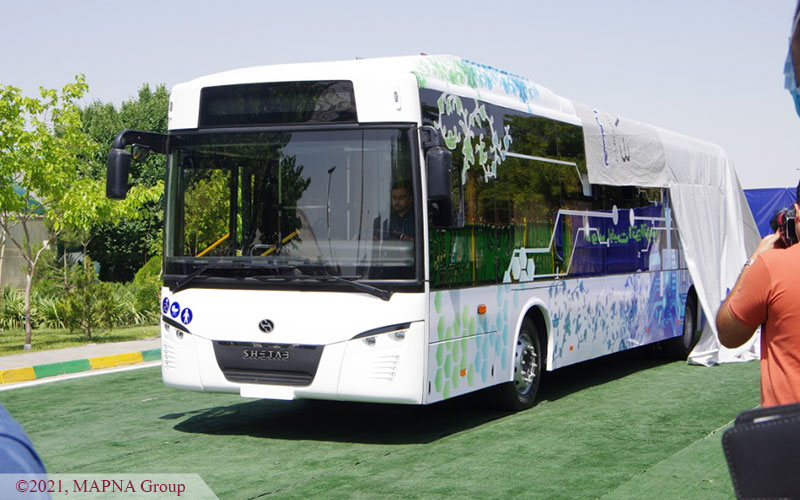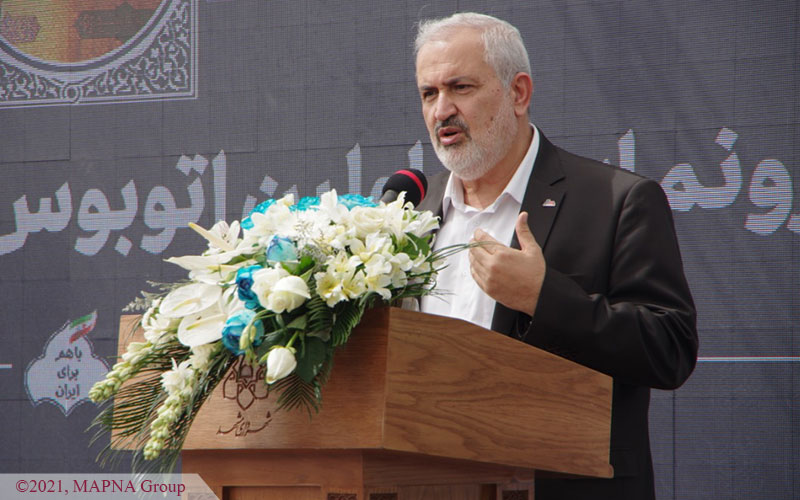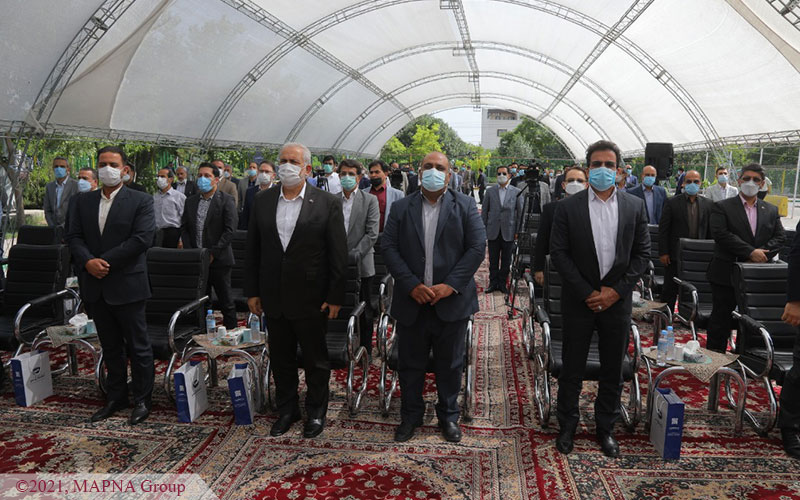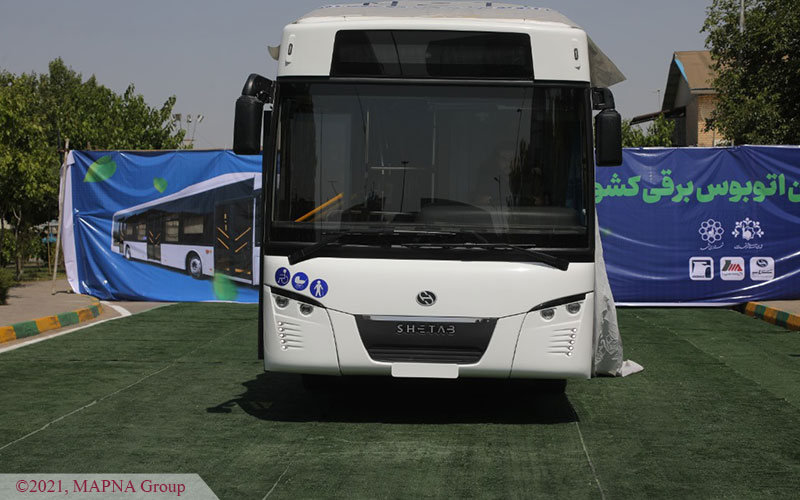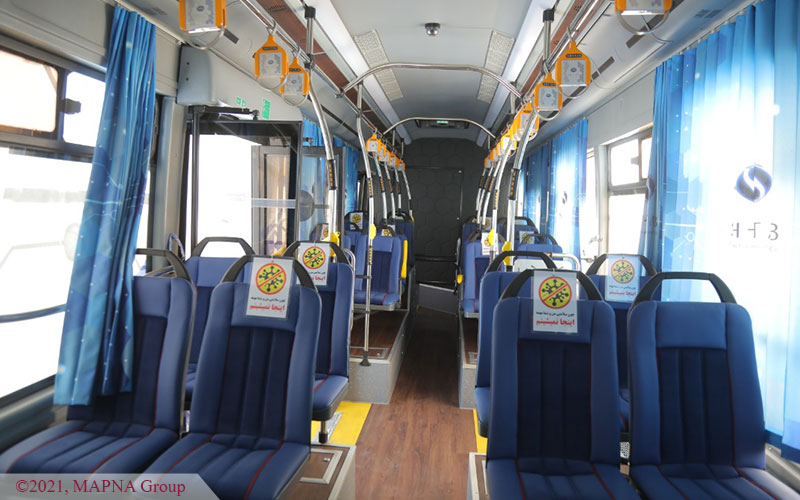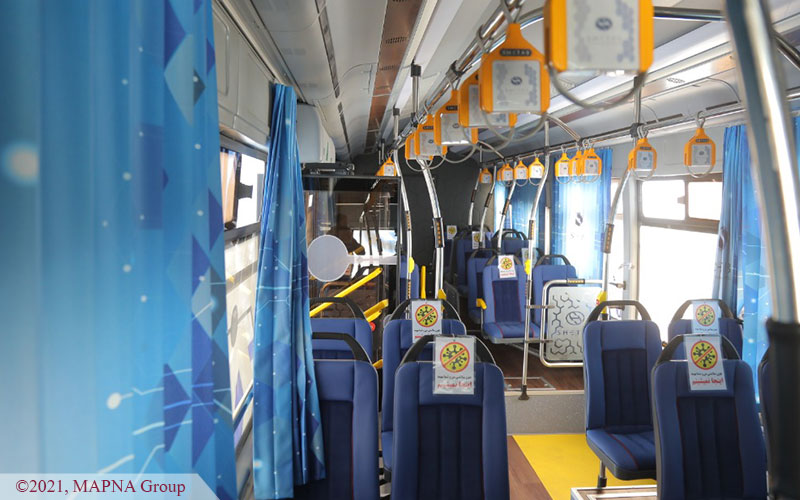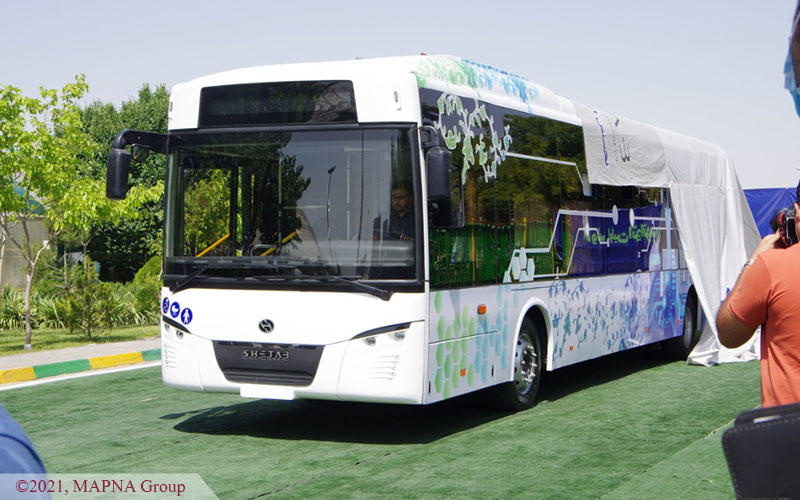MAPNA Group unveiled its first domestically-manufactured electric bus in Mashhad, Razavi Khorasan Province, on Wednesday, June 2.
The e-powered bus, dubbed ‘Shetab’, was unveiled in a ceremony attended by MAPNA CEO Abbas Aliabadi, Kambiz Moradi, the CEO of Parsan Electric Bus Production Company, Mashhad Mayor Mohammad-Reza Kalaei, and a number of senior officials of the northeastern metropolis.
Shetab has been designed and manufactured by Parsan Electric Bus Production Company, a joint venture between MAPNA Group and Oghab Afshan Industrial and Manufacturing Company, which was set up in September 2020.
The monocoque design of the body and chassis structure distinguishes Shetab electric bus from typical models. The low-deck bus has no steps and is built on a product lifecycle management platform (PLM), which allows several firms to work simultaneously on all technical processes, including detailed and master design, engineering, manufacturing, and project management.
It’s a smart vehicle with data center connectivity, energy recovery, quick charging, and a cutting-edge display system. The vehicle’s cooling system was created with Iran’s environment in mind. Shetab electric buses will be offered in a number of packages, each with a different battery capacity to fit the needs of each route.
Energy Among Biggest Challenges Facing Humanity
Addressing the ceremony, Aliabadi noted that with the global population swelling and industrialization on the rise, energy supply has turned into a major challenge facing the humanity.
The MAPNA CEO stressed the need to exert every effort to reach viable solutions to ensure the societies’ access to sustainable energy resources through “increasing productivity and reducing fuel consumption.”
Referring to the significance of electrification, he said, “Efforts are underway to minimize or even stop carbon dioxide emission by 2050; to achieve this goal, we need to transition to electrification.”
Aliabadi termed ‘Shetab’ e-bus as an important step forward on this path, as “the green bus has the capacity to meet the future smart urban fleet demands.”
Kambiz Moradi, for his part, described that the development of the new bus by domestic experts as a significant achievement toward electrification, and said, “The realization of this goal indicates the developmental aspirations of MAPNA and Oghab Afshan to reach sustainability in the critical energy field.”
Future Transportation Belongs to EVs
Kalaei, the Mashhad Mayor, underlined that the future of transportation in megacities, such as Mashhad, belongs to green buses, terming electrification as a major step toward meeting energy challenges in sprawling areas.
“So, we have decided to pioneer this move by electrification of the urban transport fleet of Mashhad,” he said.
The official added that MAPNA and Oghab Afshan have signed a deal to deliver 100 e-powered buses to Mashhad Municipality, ten of which will join the fleet in the current Iranian year (ends in March 2022).
Rapid Move toward Smart Urban Mobility
MAPNA Group’s localization of green buses represents a significant step forward in the electrification business, as well as a contribution to the country’s industrial growth plans.
Over 60% of the Shetab electric bus is designed and manufactured domestically. MAPNA intends to achieve 100% indigenization by investing in parallel battery and engine development projects.
MAPNA Group has created a solid opportunity for the project to grow by employing professionals and hardworking university graduates in the sectors of electricity, electronics, power electronics, programming and software development, data analysis, intelligence, and system engineering.
The expansion of the research infrastructure will also help in the application of this technology to other modes of transportation, such as personal automobiles and semi-heavy and heavy commercial vehicles.
E-Bus Advantages
Electric buses bring with them a wide range of advantages. Transition to a green urban transit fleet will improve air quality, reduce emissions, cut costs, and provide the public with smoother and more extensive service. Electric busses are also quieter than diesel ones, which means less noise pollution.
Replacing fossil fuels with electricity is also a great approach to address the concerns about the depletion of natural resources.
EV Charging Stations in Iran
The lack of financial resources to import electric vehicles and infrastructures has highlighted the importance of localization of such technologies. Aware of this need, MAPNA Group began its initial feasibility studies in the early 2010s, and finally opened Iran’s first electric vehicle charging station at Tehran’s iconic Milad Tower in May 2019.
Built over 700 square meters, the station in the northwest of the capital includes a 43-kilovolt alternating current (AC) charger plus a fast charger working under the Chademo Protocol, a trade name of a quick charging method for electric vehicles which suits Japanese and Korean EVs such as KIA, Nissan, and Mitsubishi.
The station also includes a 4.7-kv slow charger as well as a 5.5-kv charger, which can be used by electric motorcycles.
The Milad Tower station has been registered on CHAdeMO’s map of worldwide fast charger EV stations. CHAdeMO is an e-mobility collaboration platform that promotes the CHAdeMO DC charging protocol.
Moreover, MAPNA opened Iran’s second EV charging station in Mashhad in January 2020.
The Group has signed an agreement with Oghab Afshan Manufacturing Company for development of electric buses for the electrification of the central city of Semnan’s urban transportation fleet.
MAPNA is also planning to carry out feasibility studies for the electrification of transportation fleets of Kish Island, southern Iran.
